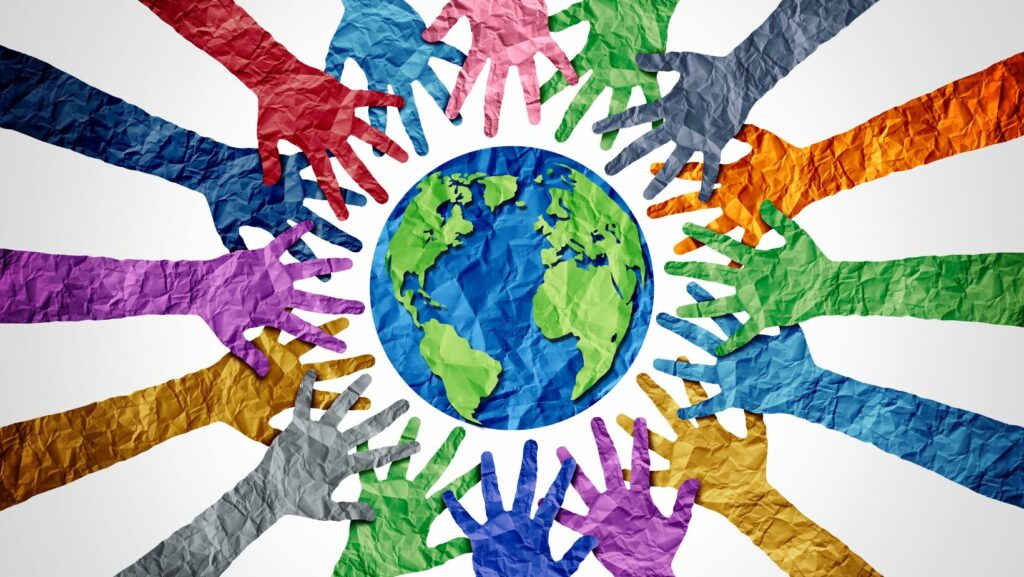In today’s global village, cultural blind spots can lead to significant misunderstandings and missed opportunities. These blind spots occur when people fail to recognize or understand the cultural norms and values that differ from their own. As businesses expand across borders and teams become more diverse, recognizing these unseen barriers is crucial for success and harmony.
Cultural Blind Spots
Cultural blind spots occur when people overlook or misunderstand aspects of a culture different from their own. Identifying these blind spots improves communication and cooperation in an increasingly diverse world.
Examples in Various Cultures
 United States:
United States:
Americans often value directness and efficiency in communication, expecting straightforward interactions. This expectation can lead to misunderstandings with cultures where indirect communication is the norm, such as in many Asian countries. For instance, in Japan, it’s common to express disagreement subtly, a stark contrast to the American approach.
India:
In India, the concept of “Jugaad” — a flexible approach to problem-solving — is prevalent. It involves using limited resources creatively to overcome challenges. Visitors or foreign businesses might see this as unstructured or chaotic, missing the innovation at play without understanding the cultural context.
Germany:
German business culture highly values punctuality and precision. An outsider might interpret their strict adherence to schedules and detailed planning as inflexibility or lack of spontaneity, but for Germans, these are markers of respect and professionalism.
 Brazil:
Brazil:
Brazilians are known for their relaxed attitude toward time, often viewing deadlines and schedules with more flexibility than is customary in places like the United Kingdom or the United States. International partners may view this cultural trait as a lack of professionalism, not recognizing it as a deep-seated cultural value prioritizing personal connections and adaptability.
Middle East:
In many Middle Eastern countries, business often intertwines with personal relationships, which may extend negotiations and decision-making processes. Western businesses might see this as inefficiency, whereas it reflects the cultural importance of trust and relationship-building in the region.
By understanding these examples, one can grasp how cultural norms and values influence perceptions and interactions, which is key to addressing and navigating cultural blind spots effectively.
Impact of Cultural Blind Spots
In the Workplace
 Cultural blind spots in the workplace lead to a multitude of issues, including communication breakdowns and decreased employee morale. For instance, when team leaders overlook cultural nuances, they risk alienating members who might feel misunderstood or undervalued. This underestimation can affect team cohesion and productivity. Companies that invest in cultural competence training experience fewer conflicts, better team collaboration, and increased overall efficiency. Embracing these diverse cultural perspectives enhances innovation, as various viewpoints lead to unique solutions and ideas.
Cultural blind spots in the workplace lead to a multitude of issues, including communication breakdowns and decreased employee morale. For instance, when team leaders overlook cultural nuances, they risk alienating members who might feel misunderstood or undervalued. This underestimation can affect team cohesion and productivity. Companies that invest in cultural competence training experience fewer conflicts, better team collaboration, and increased overall efficiency. Embracing these diverse cultural perspectives enhances innovation, as various viewpoints lead to unique solutions and ideas.
In International Relations
In the realm of international relations, cultural blind spots can result in diplomatic faux pas and strained relations between countries. Misinterpretations of cultural norms often cause unnecessary conflicts and hinder mutual agreements. For example, what’s considered a straightforward negotiation tactic in one country could be seen as aggressive in another. Awareness of these cultural differences is crucial for diplomats and international businesses, as it facilitates smoother negotiations, fosters respect, and builds stronger alliances.
Strategies to Overcome Cultural Blind Spots
Education and Awareness
 Promoting cultural literacy plays a pivotal role in overcoming cultural blind spots. Many organizations bolster their cultural awareness programs by integrating comprehensive training sessions that cover a range of cultural norms and values. For instance, employees partake in workshops that simulate real-world scenarios, revealing how cultural nuances can affect communication and decision-making processes. Additionally, companies often provide access to online courses that delve into the history, customs, and societal norms of different cultures, enhancing employees’ global competency. Effective training programs also encourage participation through interactive quizzes and role-playing, making the learning experience both engaging and informative.
Promoting cultural literacy plays a pivotal role in overcoming cultural blind spots. Many organizations bolster their cultural awareness programs by integrating comprehensive training sessions that cover a range of cultural norms and values. For instance, employees partake in workshops that simulate real-world scenarios, revealing how cultural nuances can affect communication and decision-making processes. Additionally, companies often provide access to online courses that delve into the history, customs, and societal norms of different cultures, enhancing employees’ global competency. Effective training programs also encourage participation through interactive quizzes and role-playing, making the learning experience both engaging and informative.
Diversity and Inclusion Initiatives
Implementing diversity and inclusion initiatives is crucial in fostering an environment that respects and celebrates cultural differences. Organizations initiate these programs by forming diversity councils or committees that assess and strategize on how to integrate diversity deeply into organizational practices. These committees typically organize regular dialogues and meetings where topics related to cultural misunderstandings are openly discussed, promoting transparency and understanding among colleagues.

